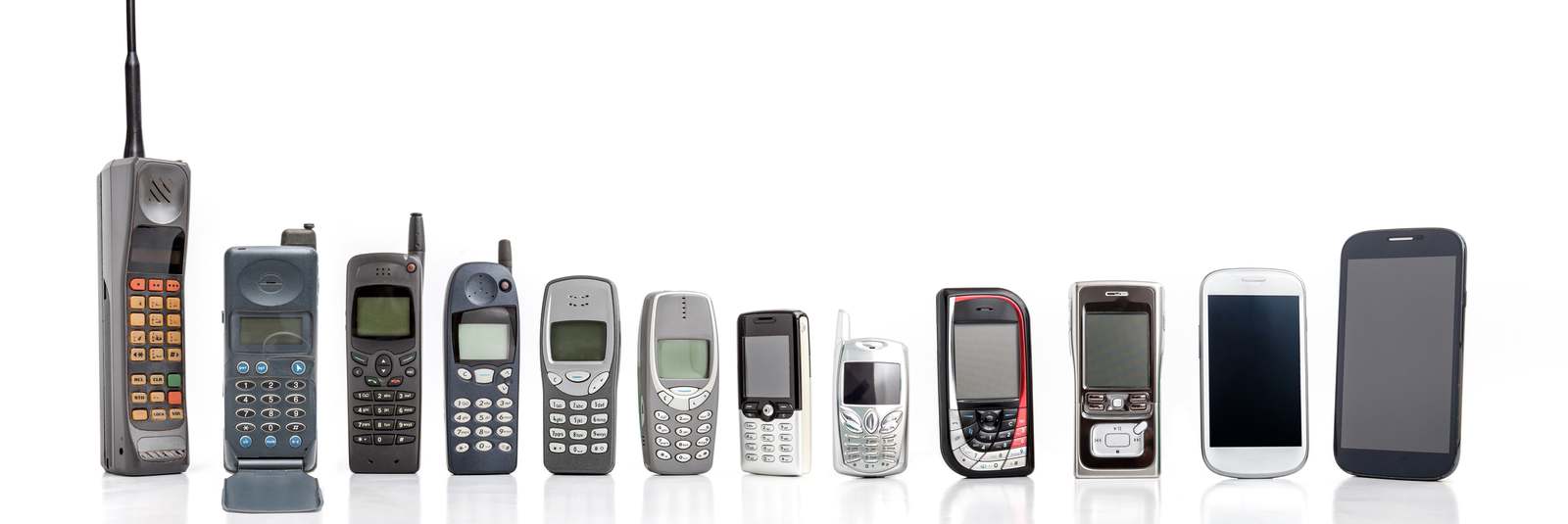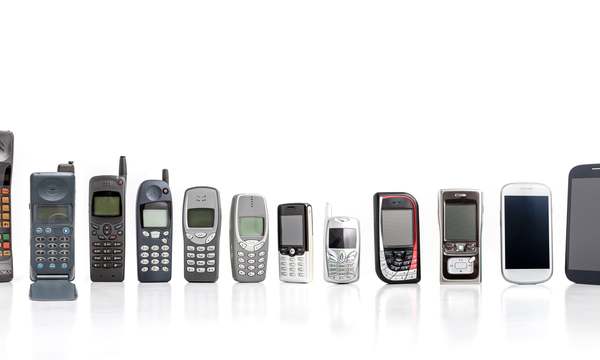
The start of Cellular
Until the mid-1980s analog cellular phones were regionally based – national regulators and major companies defined standards that enabled voice telephone calls between mobile devices; generally mobile devices the size of a small briefcase. Specialist manufacturers provided products for their market, often with a regional bias: Motorola in the US; Bosch and Siemens in Germany; Ericsson and Nokia in the Nordic region; etc. But the markets were not big enough to justify R&D investment at a level that would lead to consumer products at consumer prices.
The creation of a digital mobile phone standard for Europe immediately changed this. Remember that at this time GSM stood for Group Speciale Mobile, set up initially within CEPT (European Conference of Postal and Telecommunications Administrations) to define that standard which was subsequently transferred to ETSI (the European Telecommunications Standards Institute). Today we call it 2G, with a nod towards the first-generation analog standards. So already two significant steps are made: a standard designed for (mostly) digital implementation with more sophisticated control and data capability; and a single standard for a market the size of the US. Other geographies moved to a digital standard too. In the US there were (at least) three simultaneously released, in Japan there was one pushed into the market by NTT, and probably others I have forgotten. Not surprisingly the regulators and manufacturers defining standards all wanted to encourage local manufacture and in my view the Europeans, frightened of the Japanese, and emerging Asian, manufacturers made the ETSI standards challenging to access: written in English, available only on paper (** ring binders) and logically convoluted.
The standard of course defines the interface between the fixed infrastructure and the mobile, and ensures interoperability: various makes of handset work with various makes of infrastructure, avoiding monopoly supply and pricing. This became another aspect of the industry. The regulator and the operator both wanted to ensure that the standard (regulator) and their chosen feature set within the standard (operator) were support by the product. So they demanded that equipment pass a sequence of detailed and stringent tests. There is good reason for this, but it provides another control point where challenger suppliers can be kept at bay.
This period also saw the emergence of other digital communication standards: digital audio; digital television; short-range communication, GPS, wireline modems and the internet, etc. Globally electronic manufacturers were shifting to digital implementations.
So as the mobile phone market in Europe became clear new players wanted to enter, but in cellular they faced these barriers: the standards were hard to access, and the approvals process was tilted against them. To cap it all GSM itself was much more complex and harder to implement than other digital standards of the time. In the early 1990s many manufacturers (both product manufacturers and component manufacturers), perhaps making cordless phones, or analog cell phones, decided to make GSM-compatible products as well. Invariably they found it much tougher than they expected. They could see a lucrative and sizeable market, but couldn’t access it in the way that they were used to.
|
DO YOU HAVE A VIEW ON THIS SUBJECT, OR RESPONSE YOU'D LIKE TO SHARE? |
TTPCom provided software and chip designs for 2G and 3G. We were lucky to find ourselves with a ready market, once we had ourselves got through the hurdles of complexity and approval. We nearly failed. Many of our customers were those who had themselves already failed and needed a leg up. At the time it was easy to underestimate the time and cost of producing a 2G phone. We had some experience in test equipment development and kicked off a handset chipset and protocol stack development in 1992, with the expectation of getting customers handsets in the market in 1994. We failed. The first handset using our technology (through a partnership with Analog Devices) was finally approved on 6 June 1996. It was the Hagenuk Global Handy.
At this time manufacturers were looking for differentiation in the core cellular technology – the radio, the modem, etc – where they hoped to find better performance, better power consumption and better cost, by mixing and matching bought-in components with in-house technology. This is no longer the case, now the cellular access technology comes in its entirety from one of three or so suppliers in the form of a chip, or chipset and the product manufacturer can’t and doesn’t fiddle with it. His differentiation comes elsewhere, usually in the physical aspects of the product (screen, keyboard, case, etc) or in the way applications are supported.
Hagenuk was based in Denmark, and they used a protocol stack from us, and chips from ADI based on our designs, but also had to add a lot themselves to get the product through approvals and into the market. For example they had a wonderfully wacky way of entering text using the numerical keyboard and a monochrome dot matrix display. They were the first of many to use our designs.
|
GET CW JOURNAL ARTICLES STRAIGHT TO YOUR INBOX Subscribe now |
TTPCom was an IP licensing company (with the same business model as ARM) selling designs for mobile phones.
Physical layer IP for the baseband and the radio was available for semiconductor manufacturers to create 2G and 3G chipsets that were compatible with protocol stack and application software also available from TTPCom. The software was sold to handset manufacturers who had chosen chipsets based on TTPCom IP. Essentially this meant that a manufacturer could create a complete handset using just core technology from TTPCom. Latterly the company also provided IP and solutions for other wireless standards, as well as complete handset implementations ready for customisation.
TTPCom was started within the TTP Group, became a wholly owned subsidiary in 1998 and floated on the London Stock Exchange in 2000, right at the end of the “Dot Com” bubble. Revenue grew to almost £70m from a wide range of customers including: RiM, Samsung, Toshiba, TCL, ADI, Intel, Hitachi, LG, etc. In 2006 the company was acquired by Motorola.
Maxon (Korean, but with R&D based in Denmark) were next. In mid-1994 we had about 12 customers for our technology each preparing their handsets for the market. We delivered a working modem on a reference design board, they converted it to a phone. Because we found it more challenging than expected to complete the design and pass the Type Approval tests ourselves they were later to market than they wished. Nevertheless 11 of the 12 stuck with us and in 1996 and 1997 achieved successful product launches.
Meanwhile the standard was not standing still. Firstly there was the addition of packet data alongside the voice and SMS channels available in the first instantiation of the standard. GPRS was a major step forward at the time as it allowed the emergence of embryonic versions of services we know today. For example, Unwired Planet offered a service over GPRS that provided weather forecasts and other regional information. Very low data rates, but even very low data rates are better than no data at all. After GPRS there were EDGE and HSPDA/HSUPA as ways of upping the data rate. For TTPCom, as a supplier of core technology this was great – it makes it harder for competitors to emerge or keep up, and it encourages customers to buy more. A perfect storm. Provided we ourselves could keep up with the emergence of the new standards, and we could: we had one of the first GPRS implementations to become available.
This need for pace led to a problem for the well-known names of the time. The standards-making machine at ETSI was running at full speed, improving the efficiency of the air interface and hence making it more complex. The market was big and product volumes large, so in order to supply the market the manufacturers needed to be big themselves with sizable R&D hardware and software teams. But big companies don’t move quickly, especially ones that make and supply complex electronics. At the same time the features that the customers on the High Street wanted were advancing rapidly. Big, slow-moving suppliers couldn’t keep up and gradually fell by the wayside: Ericsson, Siemens, Motorola, Nokia, RiM, were (in my view) all overwhelmed by rapidly changing consumer demand whilst concentrating their efforts on things that the consumer no longer valued. Suppliers needed to be big enough to develop, make and supply the phones, but then they were too big to innovate and keep up with the market, particularly in the area of software and applications.
Today of course it is different. The cellular connectivity, as well as BlueTooth, Wi-Fi, GNSS, NFC, and other things are supplied in a package coming from one of three or so major chipset manufacturers. It works, it’s proven, it will pass the necessary tests and manufacturers don’t fiddle with it. Qualcomm is the dominant supplier. The handset manufacturer still has a lot of work to do of course. There is a core software environment coming from Android, but differentiation needs innovation and effort. That the focus has moved from communications to computing is illustrated by the fact that Oppo/OnePlus, a relatively new Chinese manufacturer, is the fourth biggest cellphone supplier in the world with 10% by volume, roughly the same as Apple. They use chipsets from Qualcomm and Mediatek. It is this separation of communications and applications that has made the industry a success. It allows a generic hardware platform to meet the various needs of many different people. We get scale where we need it – in the hardware – and allow narrow use cases where the user wants it – in the applications.
There is no doubt that the industry would have got there in the end, but the real driver has been Apple. I was with Motorola (then number 2 to Nokia) at the time that the first iPhone came out. I well remember the crisis review meeting in Libertyville to assess the threat where somebody said “We’ll ship more phones in the next couple of weeks than they expect to ship in a year. Let’s not rush into reacting.” If you’ve ever used a Motorola phone from that time you’ll know how idiosyncratic the user interface was, but it had tens of millions of trained users! They, and the Blackberry two-thumb typists, have all jumped ship lured by a simply better (and more flexible) user interface and range of applications.
The cellular modem is complex and expensive to develop; this has resulted in consolidation into a very small number of suppliers despite the massive scale of the market. Was it the same with disc drives, as Seagate, Western Digital and Toshiba chased capacity and price improvements? Have the same forces shaped the PC market, where Intel and AMD (neither of which have been successful in cellular incidentally) dominate the supply chain?
It is interesting to ask where we will see this happening next. The subtle interplay of hardware, software, regulation, scale, and consumer demand makes for interesting times, and nobody can deny that the last 30 years of cellular have been interesting.
|
GET CW JOURNAL ARTICLES STRAIGHT TO YOUR INBOX Subscribe now |
Tony has 30 years’ experience in the mobile communications industry and a PhD in control theory. Following a career at PA Technology and then as one of the founders of TTP, in 2000 he led the spin-out and flotation of TTP Communications plc, a major licensing business in cellular that was acquired in 2006 by Motorola. He was also a founder of ip.access, the femtocell business, and more recently led the spin-out of a soft modem start-up, Cognovo, from ARM Holdings. Cognovo was acquired by u-blox AG in 2012. u-blox is a $400m Swiss supplier of location and communications modules and chips that is focused on industrial, automotive and professional applications, particularly in the Internet of Things. For 5 years Tony drove the strategic expansion of u-blox and enabled a number of acquisitions that extended the scope and direction of the company. He is interested in creating new opportunities at the point where communications and computing converge.











